The Fire TV Recast DVR is among several new products Amazon is preparing to release for this year’s holiday shopping season, and it was a runaway favorite for Amazon-watchers given a preview of Amazon’s newest products last week.
The Recast is designed to appeal to cord-cutters who miss their cable-TV DVR box. Amazon’s TV recording solution is strictly designed to record over-the-air/free TV broadcasts, and won’t work with satellite, telco, or cable television. Oddly, it does work with one streaming cable-TV alternative: PlayStation Vue, but for the most part, Recast will make sense if you spend a lot of time watching and recording local TV stations. In larger cities, this means the ability to record 35-50 different stations and their digital subchannels. In smaller markets, a dozen or so stations ‘worth recording’ is more likely.

During brief demonstrations given to reporters, it quickly became clear Amazon designed Recast to work best within Amazon’s own product ecosystem, which means it requires at least an Amazon’s Fire TV stick ($29.99 each, when bought bundled with Recast) for each television. The Fire TV home screen adds a “DVR” menu automatically to the list of user options when it senses the presence of a Recast device. Amazon promises Recast playback will also work on tablets and phones, but not web browsers.
Recast is a larger-than-expected device, about the size of a shoebox, and contains TV tuners and a 500 GB hard drive. Customers will also need to supply an antenna (or buy the $24.99 ’50 mile’ window antenna offered by Amazon as an accessory). The box is designed to be placed anywhere out of sight, and has just three ports — one for power, another for USB to power the antenna, and an Ethernet connection. Amazon says Recast will work best placed where television reception is the strongest. Received signals are sent via Wi-Fi to Fire TV, PlayStation Vue, and the appropriate Amazon Fire apps for iOS and Android. Recast also offers built-in Wi-Fi Direct, which works with Fire TV and Amazon’s Echo Show, but Recast also supports traditional Wi-Fi. Amazon claims videos stream up to 1,440 x 720 at 60 frames per second.
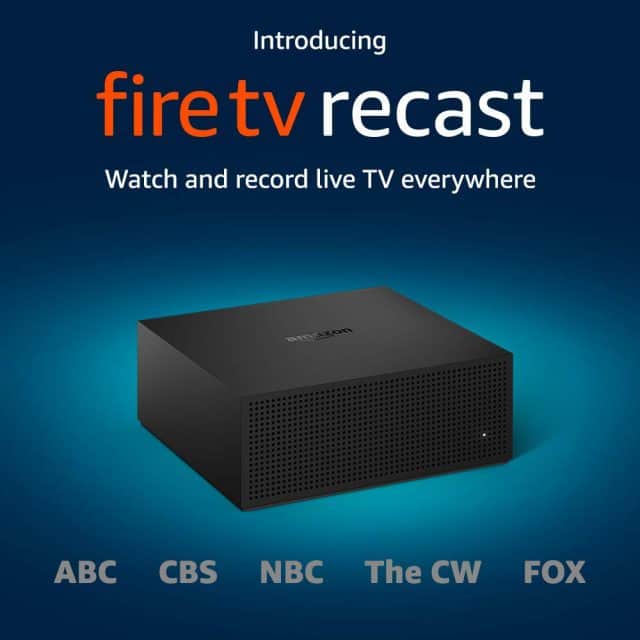
Amazon Fire TV Recast
Recast’s standard configuration ($229) has two tuners and a 500GB hard drive, supporting two concurrent recordings and up to 75 hours of stored HD content. A deluxe version containing four tuners capable of recording four different shows/channels at the same time and a 1 TB drive doubles storage capacity for just $50 more, and will go on sale Nov. 14 for $279.99. Amazon is accepting pre-orders for both now.
PROS:
- Finally a mainstream DVR that works for over-the-air recordings without expensive monthly service fees.
- Amazon has kept the box simple, and has a tutorial/setup procedure to help you find the best place to locate the DVR to receive as many channels as possible.
- Reviews indicate recordings were of good quality, assuming one gets reasonably good TV reception.
- Integrates well with PlayStation Vue and Amazon’s Fire TV.
- Box can be placed anywhere, out of sight, because it connects with your other devices wirelessly.
- Deluxe box offers four tuners and lots of recording space for just $50 more than the base unit.
CONS:
- Amazon should have just bundled an antenna in the box because it is required to assure good reception.
- Recast is clearly designed for use with Fire TV, which means it is not a great option for other box owners.
- Recast limits playback to its own apps and Fire TV. No browser support.
- It only works with one streaming service (PlayStation Vue) and over the air stations. No support for cable, satellite, or telco TV.
- It’s big and bulky.
- Asking $229 for a box that only records over the air stations may be a high hurdle for some.
| Size | 7.1” x 7.1” x 2.9” (180 mm x 180 mm x 73 mm) |
| Weight | 2.4 lbs (1066 g) |
| Processor | Dual Core |
| ATSC Tuners | 2 Tuners |
| Transcoders (for playback) | 2 |
| Storage | 500 GB up to 75 hours of HDTV |
| Memory | 2 GB |
| Wi-Fi Connectivity | 2.4 G Wi-Fi 2×2 Wi-Fi b/g/n and 5 G Wi-Fi 2×2 Wi-Fi a/n/ac |
| Voice support | Fire TV Recast can be controlled using voice through supported Alexa endpoints like Echo Show, and the Alexa Voice Remote on Fire TV devices and Fire TV Edition televisions. |
| Ports | 1 x Type A USB 3.0 (does not support storage), TV Antenna Input, Gigabit Ethernet, Power |
| System requirements | Fire TV streaming media player, Fire TV Edition television, or Echo Show, and compatible mobile device. |
| Setup requirements | Fire TV mobile app (available on Amazon Appstore, Google Play Store, or iOS Appstore) on a Fire tablet (5th Gen or newer), an iOS device running iOS10 or higher, or an Android device running Android 4.4 or higher |
| Required for playback | Any one of the following: Fire TV streaming media player, Fire TV Edition television, Echo Show, Fire tablet (5th Gen or newer), an iOS device running iOS10 or higher, an Android device running Android 4.4 or higher |
| Warranty and service | 1-Year Limited Warranty and service included. Optional 2-Year and 3-Year Extended Warranty available for U.S. customers sold separately. Use of Fire TV is subject to the terms found here. |
| Regional support | U.S. only |
| Accessibility features | VoiceView screen reader enables access to the vast majority of Fire TV Recast features for users who are blind or visually impaired. Watch videos and TV shows with closed captioning displayed. Captions are not available for all content. |
| Included in the box | Fire TV Recast, 50W Power Supply, Quick Start Guide |
Amazon introduces Amazon Fire TV Recast, a home DVR for over the air television stations that works best with Amazon’s own Fire TV. (1:14)


 Subscribe
Subscribe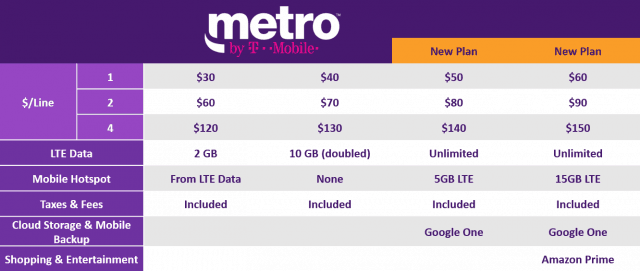
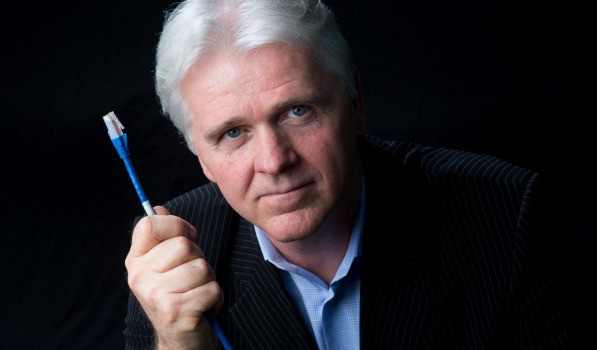
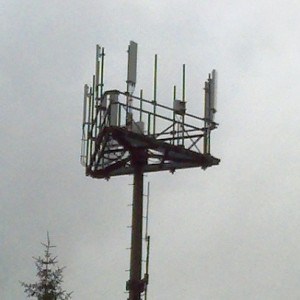 Under the current NBN fair use policy, monthly downloads per household are capped at 400 GB, with maximum usage during peak usage periods limited to 150 GB a month, which is already significantly less than what most average American households consume each month. With expensive and unexpected early upgrades to more than 3,100 cell towers to manage rapidly growing usage, the cost of service is starting to rise substantially, even as usage limits and speed reductions make these networks less useful for consumers.
Under the current NBN fair use policy, monthly downloads per household are capped at 400 GB, with maximum usage during peak usage periods limited to 150 GB a month, which is already significantly less than what most average American households consume each month. With expensive and unexpected early upgrades to more than 3,100 cell towers to manage rapidly growing usage, the cost of service is starting to rise substantially, even as usage limits and speed reductions make these networks less useful for consumers.
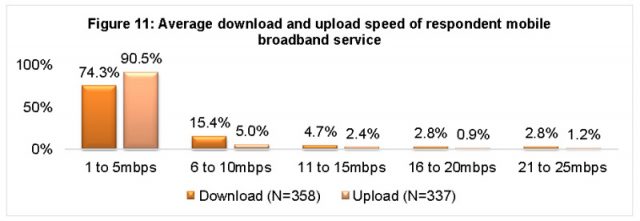


 Tribune Media walked away from its $3.9 billion dollar merger agreement with Sinclair Broadcast Group this morning, and announced it would sue Sinclair for $1 billion for its conduct trying to get the deal approved, including withholding information and deceiving regulators.
Tribune Media walked away from its $3.9 billion dollar merger agreement with Sinclair Broadcast Group this morning, and announced it would sue Sinclair for $1 billion for its conduct trying to get the deal approved, including withholding information and deceiving regulators. Sinclair, unlike other TV station owners, also has a long history of being active in partisan politics, airing programming in favor of conservatives and openly advocating for the agendas of the Bush and Trump Administrations. Its long-standing policy to require its stations to air corporate-produced news segments and commentaries during local newscasts
Sinclair, unlike other TV station owners, also has a long history of being active in partisan politics, airing programming in favor of conservatives and openly advocating for the agendas of the Bush and Trump Administrations. Its long-standing policy to require its stations to air corporate-produced news segments and commentaries during local newscasts 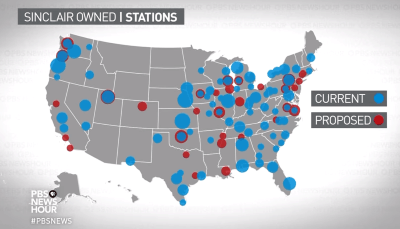 This morning, Tribune officially
This morning, Tribune officially 
